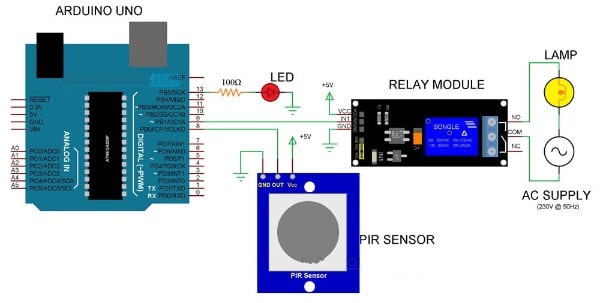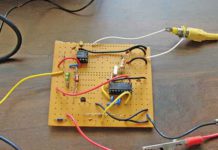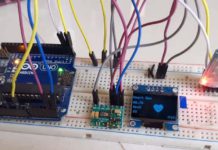Hey freaks, Welcome again we have come with another awesome electronics project. Automatic Room Lights using Arduino, this project is based Arduino & PIR Sensor. Amazing thing of this project is it will automatically On/Off the room lights depending on presence of human in the room.
We can implement this project in our garages, staircase, bathrooms, etc. where we generally forget to turn off the lights. Also, it will save electricity, lights automatically turn on only if there is anyone in the room. A similar concept can also be used to implement the automatic toilet flush valves, hand dryers, etc.
About the Automatic Room Lights Using Arduino Project:
The Automatic Room Lights System using Arduino is a very simple and useful Arduino project. This project mainly requires a PIR Sensor, Relay Module, and Arduino Microcontroller as the PIR sensor detects the presence of humans in the room and sends the signal to Arduino.
The main components required for the Automatic Room Lights project are Arduino, PIR Sensor & the Relay Module. Out of these three PIR sensor is the main component that helps to detect humans.
Circuit Diagram of Automatic Room Lights System:
The circuit diagram of the Automatic Room Lights System based on Arduino is given below :

CAUTION: This project requires 230V AC Mains. Be careful while connecting the bulb & Relay to supply. We recommend expert supervision if you are unfamiliar with the connections.
The Relay Module is a useful component, it allows Arduino, and other Microcontrollers to control big electrical loads. We used only one relay a Relay Module of 2-channel in this project. To control a single relay on the Arduino board, we need to connect three pins of the relay module to Arduino: VCC, GND & IN1.
Also Visit: Latest Jobs, Interships & Off-Campus drives
The relay module used as an active LOW one, when the IN1 pin is HIGH, the relay is OFF and the relay is ON when it is LOW. This is an important point programming the Arduino UNO.
Circuit Design & Connections:
- The Arduino’s Digital I/O Pin 8 is connected to the Data OUT Pin of the PIR Sensor.
- Pin 13 of Arduino is connected to an LED to indicate whether the light is ON or OFF.
- Pin 9 of Arduino is connected to the IN1 pin of the Relay Module.
Also Read: Wireless AC light Dimmer Using Arduino: Hand Gesture based
- Through Relay a bulb is connected to the mains supply.
- One wire of the mains supply is connected to one terminal of the bulb. The Normally Open (NO) contact of the Relay Module is connected to the other terminal of the bulb.
- The other wire of the mains supply is connected to the Common (COM) contact of the Relay.
The code for the Automatic Room Lights using Arduino –
Program code of Density Traffic Signal System: Click Here
Working of Automatic Room Lights Using Arduino:
Initially, when there is no human, the Sensor OUT pin stays LOW as it doesn’t detect any person. And when someone come to the room, the infrared radiation changes and detected by the PIR Sensor and the pin becomes HIGH.
Also Read: Social Distancing Cap Using Arduino
Whenever the output pin becomes HIGH, Arduino will make the relay pin LOW and activate the relay (relay module is an active LOW module). And the lights will turn ON, and stays ON as long as there is someone in front of the sensor.
If the person leaves or takes a nap, the Infrared Radiation becomes stable and hence, the Data OUT of the sensor will become LOW. And it will make the Arduino to make the relay pin HIGH and turn OFF the relay hence, the room lights will be OFF.
For more electronics projects visit our website regularly, and don’t forget to join our social media groups for latest updates of jobs, internships & projects.








